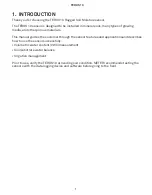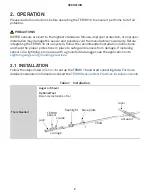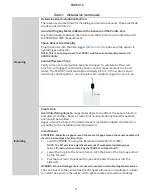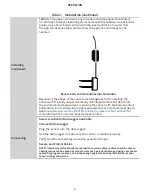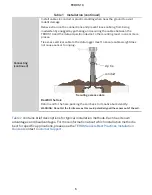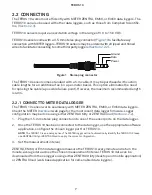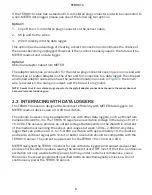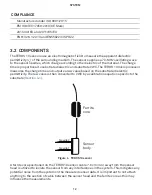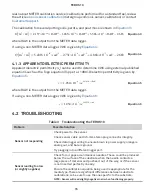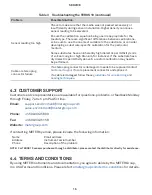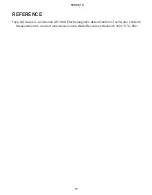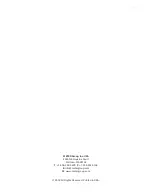
14
SERVICE
4. SERVICE
This section contains information about calibration frequencies, cleaning guidelines,
troubleshooting guidelines, customer support contact information, and terms and conditions.
4.1 CALIBRATIONS
Following are the explanations of the mineral soil, soilless media, and dielectric calibrations
for TEROS 10, where
is the VWC (in m
3
/m
3
),
e
is dielectric, and
RAW
is the raw sensor
output, when read with a METER or third-party data logger.
The TEROS 10 is not sensitive to variation in soil texture and (electromagnetic
conductivity) EC because it runs at a high measurement frequency. Therefore, its
generic calibration equation should result in reasonable absolute accuracy: 0.03 m
3
/
m
3
for most mineral soils up to 8 dS/m saturation extract. However, for added accuracy,
customers are encouraged to perform
(metergroup.com/
soil-sensor-calibration).
4.1.1 MINERAL SOILS
According to METER tests, a single calibration equation will generally suffice for most
mineral soil types with ECs from 0 dS/m to 8 dS/m saturation extract. VWC (
) is given by
Equation 1
Θ
m
3
/ m
3
(
)
=
1
.
895
×
10
−
10
×
RAW
3
−
1
.
222
×
10
−
6
×
RAW
2
+
2
.
855
×
10
−
3
×
RAW
−
2
.
154
where RAW is the output from the METER data logger.
If using a non-METER data logger, VWC is given by
Equation 2
Θ
m
3
/ m
3
(
)
=
4
.
824
×
10
−
10
×
mV
3
−
2
.
278
×
10
−
6
×
mV
2
+
3
.
898
×
10
−
3
×
mV
−
2
.
154
A third-order equation is used for the mineral soil calibration because it provides the best
predictions of VWC in the range of VWC found in mineral soils, but this equation reaches
a maximum at approximately 0.64 m
3
/m
3
in pure water. To display data on a scale from
0 to 1.0 m
3
/m
3
, VWC should be modeled with a quadratic equation (which would result in
a 1.0 m
3
/
m
3
in water). However, METER does not recommend this for mineral soils because it
often makes the calibration in the range of VWC found in mineral soil less accurate.
4.1.2 SOILLESS MEDIA
TEROS 10 sensors are calibrated in potting soil, perlite, and coir. The goal is to create a
generic calibration equation that will work in many nonsoil substrates with an accuracy of
0.05 m
3
/m
3
. For higher accuracy, performing a media-specific calibration should improve
the accuracy to 0.01 to 0.02 m
3
/m
3
. The differences between mineral soil and soilless media
calibrations are caused by high air volume in the organic soils that lowers the starting (dry
media) dielectric of the sensor. For more information on how to calibrate sensors or to


